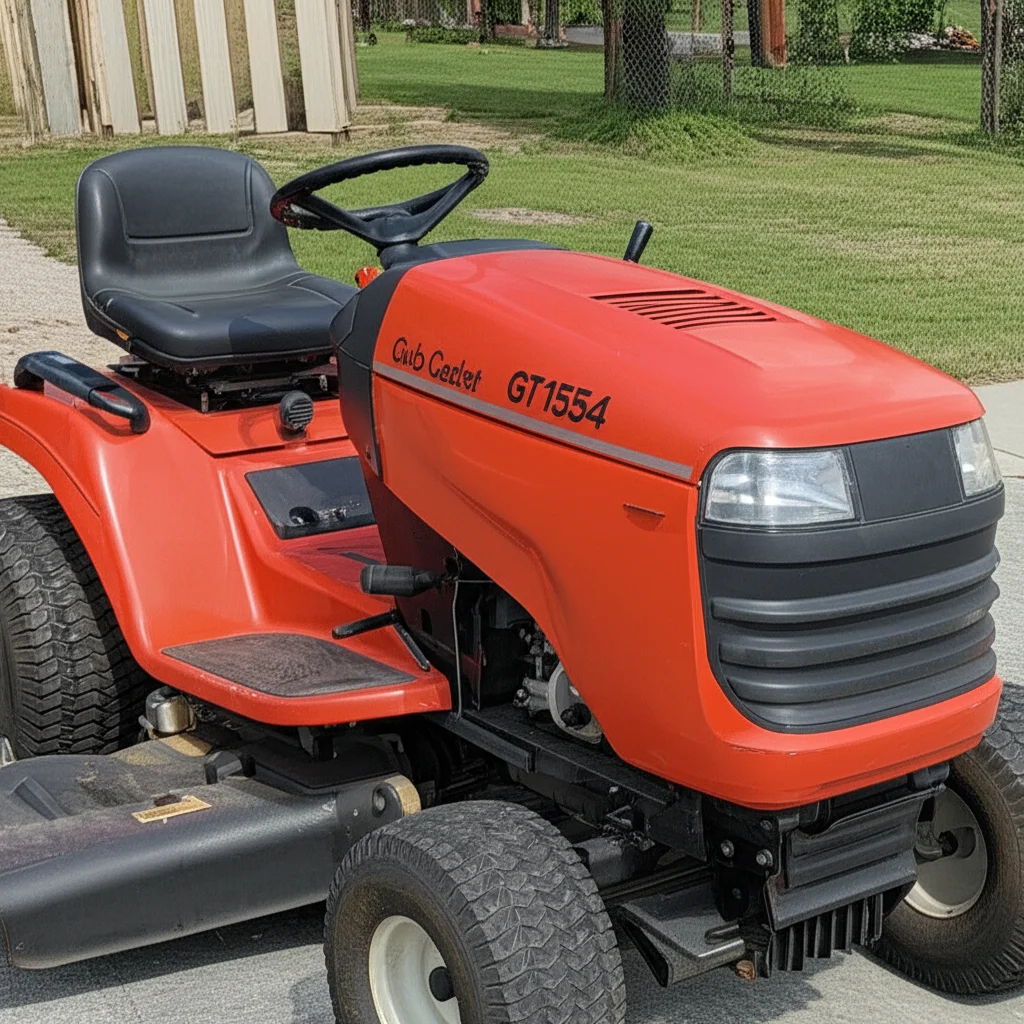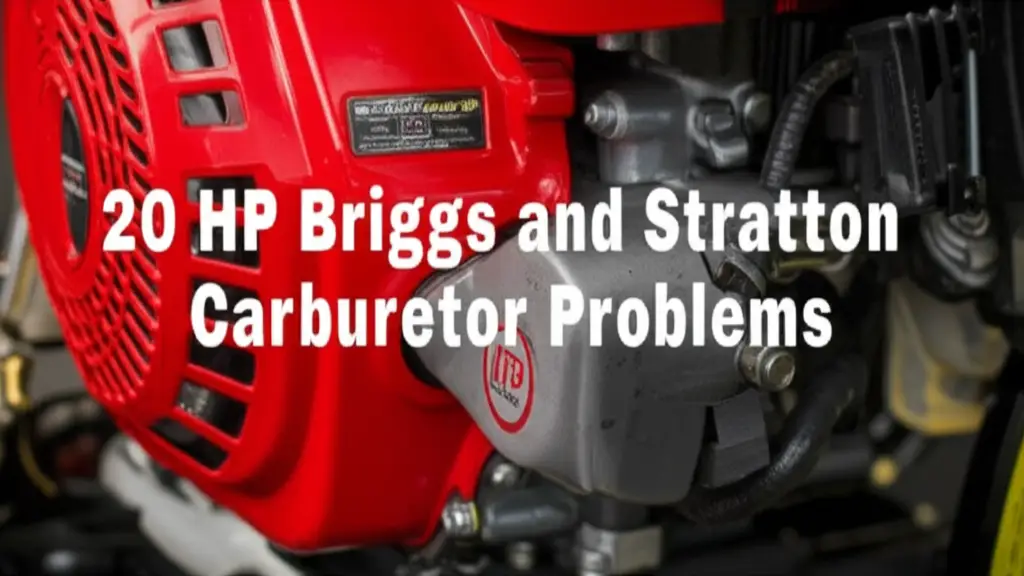· Lawn Mower Repair · 13 min read
Cub Cadet 1040 LTX Oil Leak Problems

Cub Cadet 1040 LTX Oil Leak Problems: Causes and Solutions
Are you frustrated with persistent oil leaks on your Cub Cadet LTX 1040 lawn tractor? You’re not alone. Many owners experience this common issue that can lead to decreased performance, potential engine damage, and messy cleanup.
In this comprehensive guide, we’ll explore the various causes of oil leaks in the Cub Cadet LTX 1040, provide step-by-step troubleshooting methods, and offer effective solutions to keep your riding mower running smoothly.
Key Takeaways
- Oil leaks in Cub Cadet LTX 1040 models typically originate from gaskets, seals, drain plugs, or oil filters
- Regular maintenance can prevent most oil leak problems
- Checking oil levels consistently helps identify leaks early
- Most oil leaks can be fixed with basic tools and moderate mechanical skills
- Severe leaks may require professional service
The Cub Cadet LTX 1040 lawn tractor commonly experiences oil leaks due to degraded gaskets, loose fittings, damaged oil seals, or improperly installed oil filters. These issues are usually repairable through proper maintenance and timely part replacement.
Understanding Your Cub Cadet LTX 1040 Engine
The Cub Cadet LTX 1040 is powered by a single-cylinder Kohler Courage engine, designed for reliability and performance. Before diving into oil leak problems, it’s important to understand your tractor’s engine system and how it manages oil flow.
The LTX 1040 uses a pressurized oil system that lubricates critical engine components. Oil is pumped throughout the engine to reduce friction, cool internal parts, and prevent premature wear. This system includes several components that can potentially develop leaks:
- Oil pan gasket
- Valve cover gasket
- Oil seals (front and rear main seals)
- Oil filter and adapter
- Oil drain plug
- Oil pressure sending unit
Understanding these components will help you better diagnose and address any oil leak issues. The LTX 1040 requires specific maintenance procedures, and following the manufacturer’s recommendations can significantly reduce the likelihood of developing oil leaks.
The engine in your Cub Cadet LTX 1040 typically takes approximately 1.5 quarts of SAE 10W-30 oil, though you should always verify the exact specification in your owner’s manual. Using the correct oil type and viscosity is crucial for proper engine function and can help prevent certain types of oil leaks.
Common Causes of Oil Leaks in Cub Cadet LTX 1040
Identifying the source of an oil leak is the first step toward resolving the issue. Here are the most common causes of oil leaks in the Cub Cadet LTX 1040:
1. Deteriorated Gaskets and Seals
Over time, gaskets and seals naturally degrade due to heat cycling, age, and normal wear. The valve cover gasket and oil pan gasket are particularly prone to developing leaks after extended use. These rubber or cork components harden and lose their sealing properties, allowing oil to escape.
2. Loose or Damaged Oil Drain Plug
The oil drain plug is a common source of leaks, especially after oil changes. If the plug isn’t tightened properly or if the gasket is damaged or missing, oil will slowly seep out. Sometimes, the drain plug threads can become stripped, which requires more extensive repair.
3. Improperly Installed Oil Filter
A common issue after routine maintenance is an improperly installed oil filter. If the filter isn’t tightened correctly or if the rubber gasket is pinched or double-gasketed, oil will leak around the filter housing. Additionally, using the wrong oil filter can lead to fitment issues and subsequent leaks.
4. Cracked Engine Block or Oil Pan
Though less common, physical damage to the engine block or oil pan can cause significant oil leaks. This might happen due to impact with obstacles like rocks or stumps while mowing, or from severe overheating that causes components to warp or crack.
5. Oil Pressure Issues
If the engine develops excessive oil pressure due to a clogged PCV (Positive Crankcase Ventilation) valve or other issues, it may force oil past seals that would otherwise contain it. This is less common but worth investigating if other causes have been ruled out.
Understanding these common causes can help you pinpoint the source of your oil leak and determine the appropriate remedy. Next, we’ll explore how to properly diagnose the exact location of your oil leak.
How to Diagnose Oil Leaks on Your Cub Cadet LTX 1040
Before attempting any repairs, you need to accurately diagnose the source of the oil leak. Follow these steps to identify exactly where the oil is coming from:
Clean the Engine Thoroughly
Start by thoroughly cleaning the engine area with a degreaser and pressure washer (if available). Be careful not to force water into electrical components. This cleaning will remove old oil residue and make it easier to spot fresh leaks.
Inspect Common Leak Points
After cleaning, run the engine for about 15 minutes, then shut it off and inspect the following areas with a flashlight:
- Around the oil filter
- The oil drain plug
- The valve cover gasket edges
- The junction where the engine meets the transmission
- The oil pan gasket perimeter
- Front and rear main seals
Look for fresh oil residue, which will appear cleaner and more reflective than old oil buildup.
Use Diagnostic Tools
For hard-to-find leaks, consider these diagnostic approaches:
- Place clean cardboard under the engine overnight to spot leak patterns
- Apply talcum powder around suspected leak areas – oil will create visible paths through the powder
- For very small leaks, use a UV dye additive in your oil and a UV flashlight to make leaks glow visibly
Check Oil Levels Regularly
Monitor oil levels before and after using your mower. A significant drop in oil level indicates an active leak that needs immediate attention. The LTX 1040 should not consume much oil during normal operation, so any noticeable decrease likely points to a leak.
Once you’ve identified the source of the leak, you can proceed with the appropriate repair solution. Remember that some leaks may have multiple sources, so a methodical approach to diagnosis is essential.
DIY Repair Solutions for Cub Cadet LTX 1040 Oil Leaks
Many oil leak issues can be resolved with basic tools and moderate mechanical skills. Here are step-by-step repair solutions for the most common oil leak problems on the Cub Cadet LTX 1040:
Replacing the Oil Filter
If the leak is coming from around the oil filter, follow these steps:
- Wait until the engine is cool to prevent burns
- Place a drain pan under the filter
- Unscrew the old filter (use an oil filter wrench if necessary)
- Clean the mounting surface thoroughly
- Apply a light film of fresh oil to the gasket of the new filter
- Screw on the new filter until the gasket contacts the mounting surface, then tighten an additional 3/4 turn by hand only
- Start the engine and check for leaks
- Clean up any spilled oil completely
Fixing Oil Drain Plug Leaks
For leaks around the oil drain plug:
- Drain the oil into an appropriate container
- Remove the drain plug and inspect it for damage
- Check the threads in both the plug and the oil pan
- Replace the drain plug washer or gasket
- Apply thread sealant if necessary (check your owner’s manual first)
- Reinstall the plug and tighten to proper torque (typically 15-20 ft-lbs)
- Refill with the correct type and amount of oil
- Run the engine and check for continued leaks
Replacing Valve Cover Gasket
If the leak is coming from the valve cover:
- Remove any components blocking access to the valve cover
- Remove the valve cover bolts in a cross-pattern sequence
- Carefully remove the valve cover
- Clean all gasket surfaces thoroughly
- Install the new gasket (do not use gasket sealant unless specified)
- Reinstall the valve cover and tighten bolts in a cross-pattern to specified torque
- Reconnect any removed components
- Run the engine and check for leaks
Addressing Oil Pan Gasket Leaks
Replacing the oil pan gasket is more involved:
- Drain the oil completely
- Remove any components blocking access to the oil pan
- Remove the oil pan bolts in a spiral pattern from the center outward
- Carefully lower the oil pan
- Clean all gasket surfaces thoroughly
- Install the new gasket
- Reinstall the oil pan and tighten bolts in a spiral pattern from the center outward to specified torque
- Refill with proper oil
- Run the engine and check for continued leaks
Using Stop-Leak Products
For minor leaks or as a temporary solution:
- Select a high-quality oil stop-leak product designed for small engines
- Follow the product instructions carefully
- Monitor oil levels more frequently after application
- Note that stop-leak products are temporary solutions and not substitutes for proper repairs
Remember that proper torque specifications are crucial when reassembling components. Over-tightening can damage parts, while under-tightening can result in continued leaks.
Preventative Maintenance to Avoid Oil Leaks
Preventing oil leaks is always easier and less expensive than repairing them. Implement these preventative maintenance practices to keep your Cub Cadet LTX 1040 running smoothly:
Regular Oil Changes
The most effective preventative measure is changing your oil regularly. For the LTX 1040:
- Change oil every 50 hours of operation or annually, whichever comes first
- Use the manufacturer-recommended oil type (typically SAE 10W-30 for most conditions)
- Always replace the oil filter with each oil change
- Use quality oil that meets or exceeds API service classification SJ or higher
Regular oil changes help prevent sludge buildup that can increase pressure on seals and gaskets.
Proper Storage Practices
How you store your Cub Cadet LTX 1040 can affect its susceptibility to oil leaks:
- Store on level ground to prevent oil from pooling against seals
- Perform an oil change before extended storage periods
- Run the engine for a few minutes monthly during storage to keep seals lubricated
- Use a fuel stabilizer to prevent fuel system issues that could affect engine performance
Regular Inspections
Develop a habit of inspecting your mower before and after each use:
- Check oil levels before starting
- Inspect the ground under the mower for signs of leaks
- Visually inspect engine components for oil residue
- Listen for unusual engine noises that might indicate internal problems
- Check and clean air filters regularly to prevent the engine from working harder than necessary
Proper Operating Procedures
How you operate your mower can impact oil leak development:
- Allow the engine to warm up before operation
- Avoid overloading the engine by cutting extremely tall grass in multiple passes
- Maintain proper operating temperatures by keeping cooling fins clean
- Avoid hitting obstacles that could damage the engine or oil pan
- Follow proper shutdown procedures to prevent pressure issues
By following these preventative maintenance practices, you can significantly reduce the likelihood of developing oil leaks and extend the life of your Cub Cadet LTX 1040 lawn tractor.
When to Seek Professional Help for Oil Leaks
While many oil leak issues can be addressed through DIY repairs, some situations warrant professional assistance. Here’s when you should consider taking your Cub Cadet LTX 1040 to a certified technician:
Complex Internal Leaks
If you’ve identified a leak coming from the front or rear main seals, or if there’s oil leaking from between the engine and transmission, these repairs typically require specialized tools and extensive disassembly. These internal seals are critical to engine operation and improper installation can lead to severe damage.
Persistent Leaks After Repairs
If you’ve replaced gaskets, seals, or other components but the oil leak persists, there may be underlying issues that aren’t immediately apparent. A professional can perform pressure tests and use specialized diagnostic equipment to identify hidden problems.
Engine Damage
If your oil leak is accompanied by:
- Unusual engine noises (knocking, ticking, or rattling)
- Blue or white smoke from the exhaust
- Significant loss of power
- Overheating
These symptoms may indicate internal engine damage that requires professional repair or even engine replacement.
Limited Time or Tools
Not everyone has the time, tools, or mechanical inclination to perform engine repairs. If you don’t feel comfortable working on your mower’s engine, it’s better to seek professional help than risk causing additional damage.
Authorized Cub Cadet service centers have factory-trained technicians with access to the correct parts and service information. While independent small engine repair shops can also address these issues, look for those with experience specifically with Cub Cadet equipment.
Professional service typically costs between $75-150 per hour plus parts, but this investment can save money long-term by preventing further damage to your valuable lawn equipment.
Frequently Asked Questions about Cub Cadet LTX 1040 Oil Leaks
Why is oil leaking from the bottom of my Cub Cadet LTX 1040?
Oil leaking from the bottom typically indicates an oil pan gasket failure or a loose/damaged drain plug. After extended use, the oil pan gasket can harden and lose elasticity, creating small gaps where oil can escape. Similarly, if the drain plug isn’t properly tightened or has a damaged gasket, oil will leak from this lowest point on the engine.
What is the most common cause of oil leaks in the Cub Cadet LTX 1040?
The most common cause is deteriorated gaskets and seals, particularly the valve cover gasket and oil pan gasket. These components naturally degrade over time due to heat cycling and engine vibration. Regular inspection and replacement of these gaskets during routine maintenance can prevent many oil leak issues.
Why is my Cub Cadet LTX 1040 leaking oil from the oil filter?
Oil leaks around the filter typically occur due to improper installation. This includes not tightening the filter enough, over-tightening and damaging the seal, or failing to lubricate the gasket before installation. Using the incorrect filter or double-gasketing (when the old filter gasket remains stuck to the engine) can also cause leaks in this area.
How can I stop my Cub Cadet engine from leaking oil?
To stop oil leaks, first identify the source, then replace the appropriate gaskets, seals, or components. Ensure all parts are properly torqued to specifications during reassembly. For minor leaks, quality stop-leak additives may provide a temporary solution. Regular maintenance and proper operating procedures help prevent leaks from developing in the first place.
What kind of oil does a Cub Cadet LTX 1040 take?
The Cub Cadet LTX 1040 typically requires SAE 10W-30 oil that meets or exceeds API service classification SJ. Always consult your owner’s manual for the exact specification, as requirements may vary based on operating conditions and engine specifications. Using the incorrect oil viscosity can contribute to seal wear and eventual leaks.
Why is the oil light flashing on my Cub Cadet LTX 1040?
A flashing oil light indicates low oil pressure, which could be related to an oil leak or a separate issue like a failing oil pump. When this light flashes, stop the engine immediately to prevent damage. Check oil levels, look for visible leaks, and address any issues before resuming operation. Continued operation with low oil pressure can cause catastrophic engine failure.
How serious is an oil leak on my Cub Cadet lawn tractor?
The seriousness depends on the rate of leakage and location. Minor seepage from a valve cover might be more of a nuisance than an emergency, while a rapidly draining leak from the oil pan or main seal requires immediate attention. Any oil leak should be addressed promptly to prevent engine damage, fire hazards, and environmental contamination.
Conclusion: Keeping Your Cub Cadet LTX 1040 Leak-Free
Oil leaks in your Cub Cadet LTX 1040 lawn tractor are frustrating but typically manageable with proper diagnosis and repair. By understanding the common causes, implementing regular maintenance practices, and addressing small issues before they become major problems, you can keep your mower running efficiently for years to come.
Remember that prevention is always the best approach—regular oil changes with quality lubricants, proper storage, and careful operation can significantly reduce the likelihood of developing leaks in the first place. When leaks do occur, a methodical approach to diagnosis and repair will save time and money.
For persistent or complex issues, don’t hesitate to seek professional assistance. The cost of professional repair is often less than the potential damage from continued operation with an active oil leak.
By maintaining your Cub Cadet LTX 1040 properly, you’ll not only avoid the headache of oil leaks but also extend the life of your investment and ensure reliable performance season after season.
Check out our guide to Cub Cadet LTX 1040 problems for more troubleshooting advice, or learn about common Cub Cadet transmission problems that might be affecting your mower’s performance.
- Cub Cadet 1040lxt
- Oil Leak
- Lawn Mower Repair
- Engine Problems
- Tractor Repair



